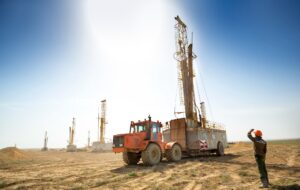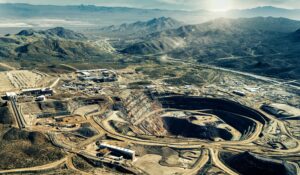EPISODE 6. Anthony Milewski and Christian Purefoy are joined by special guest Jamie Strauss, CEO and founder of Digbee, to talk about how ESG has blown up — and what comes next.
Subscribe for Investment Insights. Stay Ahead.
Investment market and industry insights delivered to you in real-time.
🎙️ Transcript
Conversation between Christian Purefoy, Anthony Milewski, and Jamie Strauss. Edited for clarity and readability.
Christian Purefoy:
Welcome to Boom, Bust and BS. Today’s episode features our guest Jamie Strauss, founder of Digbee, following a successful career in mining finance and ESG. With political winds shifting and ESG becoming a polarizing term, Jamie’s insight into responsible mining investment couldn’t come at a better time.
Anthony Milewski:
Thanks for joining us, Jamie. ESG is now under pressure in the U.S., especially with a political climate hostile to anything seen as liberal or “Democratic policy.” Yet mining still needs a license to operate. What’s really going on in the sector?
Jamie Strauss:
Thanks, Anthony. We’re at a transformation point. ESG—let’s be honest—became a busted flush. Much of it was compliance theater with little value. The mining sector pushed back. But now, with gold at record highs and critical minerals central to geopolitics, the industry’s lack of investor traction is stark.
Why? Because capital providers need to see credible risk management. Projects regularly go over budget and over schedule—84% according to McKinsey, often by 42%. That destroys shareholder value.
The opportunity now is to professionalize communication and prove to investors that mining companies manage risk responsibly. That could unlock a wave of institutional capital.
Anthony Milewski:
But are we really talking about institutional investors here? I recently bought a few juniors on the back of the gold rally. Didn’t look at permitting, ESG, nothing. Just good projects in good jurisdictions. My only question: will it go up?
Jamie Strauss:
Fair point. But “investor” means many things. You’re describing high-net-worth speculation. Institutions like Orion or BlackRock do real due diligence—permitting, ESG, social license, the works. When companies transition from exploration to production, they need that institutional capital. Those funds want to see risk mitigation and sustainability leadership.
Christian Purefoy:
So how does Digbee help?
Jamie Strauss:
We provide mining-specific sustainability assessments aligned with global standards. It’s internal risk mapping plus external trust-building. For $25,000, a junior can demonstrate leadership and improve its attractiveness to investors—cutting the discount rate or cost of capital. We’ve worked with names like Canada Nickel. Think of it like a “43-101” for ESG.
Anthony Milewski:
Are you unique? Are accounting firms or other ESG providers doing this?
Jamie Strauss:
No one else does what we do: mining-specific, tailored by stage (exploration, development, production), and mapped to over 35 global ESG frameworks. We developed it with input from BlackRock, Orion, Sibanye, BMO, and others.
Christian Purefoy:
There’s also talk about a premium for responsibly mined metals. Will we see that?
Jamie Strauss:
Probably not at scale—liquid markets make that difficult. But preferred status in offtakes and avoidance of future discounts? Absolutely. It’s less about a green premium and more about avoiding penalties.
Christian Purefoy:
So how do you call this moment? Boom, bust, or BS?
Jamie Strauss:
I’m a cautious optimist. It’s a matter of when, not if. The cycles will turn. We need real money flowing into real assets. But for that, the sector must build trust. Prices, of course, help as a tailwind.



















